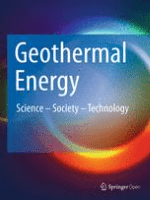
Geothermal Energy
Scope & Guideline
Exploring the depths of geothermal science for a sustainable tomorrow.
Introduction
Aims and Scopes
- Geothermal Resource Assessment:
Focuses on techniques and methodologies for evaluating geothermal resources, including geochemical, geophysical, and geological assessments to determine the potential and viability of geothermal sites. - Thermal and Hydraulic Modelling:
Involves the development and application of advanced modeling techniques to simulate heat transfer and fluid flow in geothermal reservoirs, enhancing the understanding of resource behavior under different exploitation scenarios. - Borehole Heat Exchanger Systems:
Explores the design, optimization, and performance assessment of borehole heat exchangers, an essential component in geothermal heating and cooling systems. - Sustainable Geothermal Development:
Investigates the economic, environmental, and social aspects of geothermal energy production, promoting practices that ensure sustainable and responsible utilization of geothermal resources. - Innovative Technologies and Materials:
Examines new technologies and materials that improve the efficiency and effectiveness of geothermal systems, including advancements in drilling techniques, heat exchange materials, and energy storage methods. - Interdisciplinary Approaches:
Encourages collaboration across various scientific disciplines, integrating geology, engineering, environmental science, and economics to foster comprehensive geothermal research.
Trending and Emerging
- Enhanced Geothermal Systems (EGS):
A growing interest in EGS reflects the need for advanced technologies to exploit geothermal energy in areas previously considered non-viable, focusing on methods to enhance permeability and heat exchange in deep geological formations. - Integration of Machine Learning and AI:
The application of machine learning and artificial intelligence in geothermal studies is on the rise, with researchers exploring predictive modeling, optimization of resource management, and real-time data analysis for improved geothermal system performance. - Geothermal Energy Storage Solutions:
Research on thermal energy storage, particularly aquifer thermal energy storage (ATES) and other innovative storage technologies, is trending as a means to enhance the viability and efficiency of geothermal energy systems. - Environmental Impact Assessments:
There is an increasing emphasis on assessing the environmental impacts of geothermal projects, including studies on groundwater interactions, induced seismicity, and ecological effects, reflecting a broader commitment to sustainable energy practices. - Multi-Objective Optimization in Geothermal Systems:
Recent publications emphasize multi-objective optimization techniques to balance economic, environmental, and technical factors in the design and operation of geothermal systems, highlighting the complexity and interdependence of these considerations.
Declining or Waning
- Conventional Geothermal Exploration Techniques:
Traditional exploration methods, such as basic geophysical surveys or simple temperature gradient studies, appear to be less frequently published as researchers increasingly adopt more sophisticated and integrated approaches. - Low-Temperature Geothermal Applications:
Research focusing on low-temperature geothermal applications has decreased, possibly due to a broader interest in high-temperature resources and enhanced geothermal systems (EGS) that offer greater energy outputs. - Historical Case Studies:
The publication of historical case studies on geothermal projects has diminished, suggesting that the field is moving towards more forward-looking research and innovative solutions rather than retrospective analysis. - Basic Mechanical and Physical Property Studies:
There is a noticeable decline in studies solely focused on the mechanical and physical properties of geothermal reservoir rocks, as the journal's emphasis shifts towards more applied research with direct implications for geothermal energy production.
Similar Journals
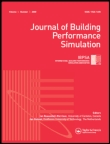
Journal of Building Performance Simulation
Exploring the Future of Architecture and Construction TechnologiesJournal of Building Performance Simulation, published by Taylor & Francis Ltd, is a premier academic journal dedicated to advancing the fields of architecture, building and construction, and computational modeling. With an ISSN of 1940-1493 and an E-ISSN of 1940-1507, this journal is recognized for its high-quality, peer-reviewed research, reflected in its impressive Q1 ranking in both Architecture and Building and Construction categories for 2023. Spread over a notable converged publishing timeline from 2008 to 2024, it aims to address contemporary issues in building performance and simulation methodologies, serving both practitioners and academics alike. Positioned within the 92nd percentile in Engineering - Architecture, the journal is a vital resource for professionals focused on innovative design and simulation technologies that enhance building efficiency and sustainability. Despite its robust reputation, the journal currently does not offer open-access options, which underscores its commitment to maintaining academic rigor. Engage with cutting-edge research that drives the future of building performance through this influential journal.

International Journal of Renewable Energy Research
Exploring the frontiers of renewable energy technology.International Journal of Renewable Energy Research (IJRER) is a distinguished peer-reviewed journal dedicated to advancing the field of renewable energy through innovative research and comprehensive analyses. Published by the esteemed INT JOURNAL RENEWABLE ENERGY RESEARCH, this journal has established itself as a vital resource for academics and industry professionals alike since its inception in 2011. With a focus on a wide array of topics in Energy Engineering and Power Technology and Renewable Energy, Sustainability and the Environment, IJRER has been recognized for its contributions, attaining a Q3 categorization in Energy Engineering and Power Technology and a Q4 rank in Renewable Energy for 2023. The journal is indexed in Scopus, demonstrating its global reach and impact, with notable rankings in both relevant categories. Researchers can access a wealth of valuable insights and findings that are crucial for fostering sustainable practices and technologies. Thus, IJRER plays a pivotal role in driving the future of renewable energy research and innovation.
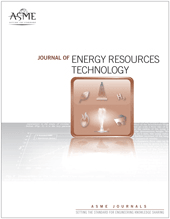
JOURNAL OF ENERGY RESOURCES TECHNOLOGY-TRANSACTIONS OF THE ASME
Advancing energy innovation for a sustainable future.JOURNAL OF ENERGY RESOURCES TECHNOLOGY-TRANSACTIONS OF THE ASME is a prestigious journal dedicated to advancing the knowledge and application of energy resources technology across various disciplines. Published by the American Society of Mechanical Engineers (ASME), this journal plays a critical role in fostering innovative research within energy engineering, fuel technology, geochemistry, and mechanical engineering, evidenced by its solid impact factor and commendable Scopus rankings, including a Q1 ranking in Mechanical Engineering. The journal's comprehensive scope covers a wide array of subjects, from renewable energy solutions to sustainability practices, making it an essential platform for researchers, professionals, and students eager to contribute to and stay abreast of developments in the energy sector. With an impressive convergence history dating back to 1979, it continues to uphold rigorous academic standards and provides valuable insights into the latest technological advancements and methodologies relevant to the field. While the journal does not offer open access options, it is unequivocally a vital resource for those engaged in cutting-edge energy research.
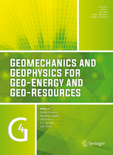
Geomechanics and Geophysics for Geo-Energy and Geo-Resources
Connecting disciplines for a sustainable energy future.Geomechanics and Geophysics for Geo-Energy and Geo-Resources, published by SPRINGER HEIDELBERG, is an esteemed open-access journal dedicated to advancing the field of geo-energy and geo-resources. With an ISSN of 2363-8419 and E-ISSN of 2363-8427, the journal welcomes contributions that explore innovative research in geomechanics, geophysics, and their applications in energy and natural resource management. Since its inception in 2015, and now enjoying open access status since 2023, it has established itself within renowned quartiles in several categories, including Q1 in Geophysics and Q2 in Economic Geology, marking it as a prominent platform for high-impact research. The journal is intrinsically linked to the interdisciplinary nature of energy studies, making it a critical resource for professionals, researchers, and students interested in the sustainable harnessing and management of geo-resources. With strong rankings in Scopus, including Rank #25 in Geophysics, it is positioned to offer valuable insights that push the boundaries of understanding in this vital domain.
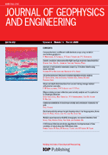
Journal of Geophysics and Engineering
Unveiling New Frontiers in Geophysics and EngineeringJournal of Geophysics and Engineering, published by Oxford University Press, stands as a pivotal platform for the dissemination of innovative research in the interdisciplinary fields of geology, geophysics, and engineering. Since its inception in 2004, this Open Access journal has focused on advancing the understanding of geophysical phenomena and their applications in engineering, receiving a commendable Q2 ranking in multiple categories for 2023, including Geology and Geophysics. With an impressive Scopus ranking reflecting its influence—such as a 143rd position in Earth and Planetary Sciences: Geology—this journal is essential for researchers, professionals, and students seeking to engage with cutting-edge advancements and policy discussions in these critical areas. The journal’s commitment to fostering knowledge and collaboration within the global scientific community positions it as a must-read for those dedicated to furthering geophysical and engineering sciences.

Geomechanics for Energy and the Environment
Innovating Geotechnical Practices for a Sustainable FutureGeomechanics for Energy and the Environment, published by ELSEVIER, stands as a premier journal in the fields of geotechnical engineering, Earth sciences, and risk assessment. With an impressive impact factor and ranking in the Q1 category across multiple relevant disciplines including Computers in Earth Sciences and Engineering Geology, this journal serves as a critical platform for groundbreaking research and innovation from 2015 to 2024. Located in the Netherlands, it aims to bridge the gap between geomechanics and energy solutions, making it indispensable for professionals and academics focused on sustainability and environmental impacts. Although it operates on a traditional access model, the rich and varied content published in this journal is essential for those at the forefront of research, helping to foster a deeper understanding of the interplay between geomechanical processes and environmental challenges. Your contributions to this journal not only enhance scientific dialogue but also pave the way for advancements in risk management and geotechnical practices that are crucial for the future.

Journal of Groundwater Science and Engineering
Innovating solutions in groundwater science and engineering.Journal of Groundwater Science and Engineering, published by GROUNDWATER SCIENCE & ENGINEERING LTD, is a prominent open access journal dedicated to the advancement of knowledge in the fields of groundwater science, technology, and management. Since its inception in 2017, this esteemed journal has rapidly gained recognition, achieving a Q2 ranking in both Economic Geology and Water Science and Technology categories as of 2023, underscoring its impact on the scientific community. The journal is committed to disseminating high-quality research that explores critical issues related to groundwater resources, sustainability, and engineering applications, positioning it as a vital resource for researchers, professionals, and students alike. With its open access policy established in 2020, the journal ensures that valuable research findings are widely available to all, facilitating collaboration and innovation in the ever-evolving field of groundwater science. Based in Shijiazhuang, Hebei, China, the journal continues to attract a diverse array of contributions from around the globe, making significant strides in environmental science and technology.
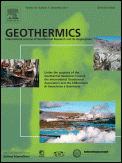
GEOTHERMICS
Unveiling cutting-edge methodologies in geothermal applications.GEOTHERMICS, published by Pergamon-Elsevier Science Ltd, serves as a leading journal in the fields of geology, geotechnical engineering, and renewable energy sustainability. With an established history dating back to 1970, this journal has evolved to become an essential platform for disseminating innovative research and applications in geothermal energy and related disciplines. Its impressive impact factor and consistent performance in prestigious quartiles—currently ranked Q1 in both Geology and Geotechnical Engineering, along with Q2 in Renewable Energy—underscore its significance in the academic community. Although this journal is not Open Access, it provides readers with valuable insights into current trends, methodologies, and technologies that drive the advancement of geothermal science. Researchers, professionals, and students alike will find GEOTHERMICS to be an invaluable resource, fostering knowledge exchange and collaboration in an increasingly important field for sustainable energy solutions.
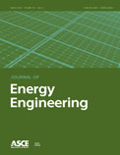
JOURNAL OF ENERGY ENGINEERING
Advancing Sustainable Solutions in Energy EngineeringJOURNAL OF ENERGY ENGINEERING, published by the ASCE-Amer Soc Civil Engineers, serves as a pivotal resource in the fields of civil and structural engineering, energy engineering, and nuclear energy research. With an ISSN of 0733-9402 and an E-ISSN of 1943-7897, this esteemed journal demonstrates a consistent commitment to advancing knowledge in energy systems, sustainability, and waste management. Ranking within the second quartile in several categories—including Civil and Structural Engineering and Energy Engineering and Power Technology—this journal maintains a strong reputation, underscored by its Scopus rankings that place it in the top tiers of its discipline. Accessible from 1982 through 2024, the journal provides researchers and professionals meaningful insights through rigorously peer-reviewed articles, critical reviews, and case studies that address contemporary challenges in energy utilization and infrastructure development. Without open access options, it ensures the integrity and credibility of published work, showcasing influential research that contributes to sustainable solutions in energy and environmental frameworks. Researchers, professionals, and students alike will find the JOURNAL OF ENERGY ENGINEERING an indispensable platform for exploration and dissemination of innovative ideas within the realm of energy and engineering.

Renewable Energy Research and Applications
Transforming Ideas into Sustainable Energy ApplicationsRenewable Energy Research and Applications is an esteemed academic journal published by Shahroud University of Technology, dedicated to advancing the field of renewable energy and its diverse applications. Since its inception in 2020, this Open Access journal has provided a platform for publishing innovative research that addresses the critical challenges and opportunities within the renewable energy sector, including solar, wind, hydro, and biomass energy. With an ISSN of 2717-252X and an E-ISSN of 2676-7430, the journal aims to disseminate high-quality research findings that inform policy makers, researchers, and practitioners worldwide. By fostering collaboration and knowledge exchange, the journal plays a vital role in the ongoing transition towards sustainable energy solutions, making it an essential resource for anyone committed to this urgent global challenge.